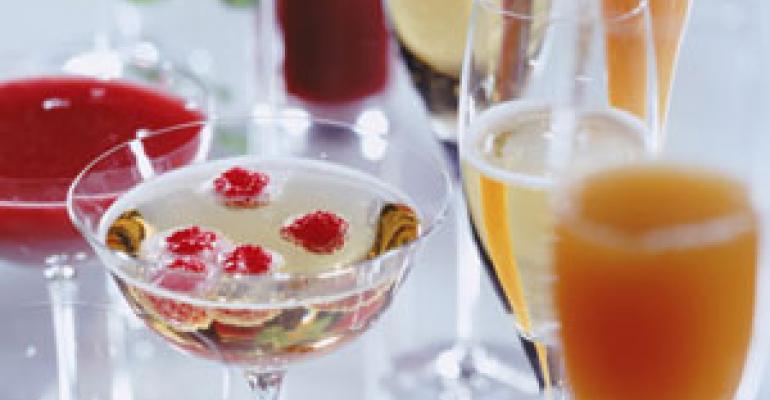Restaurant and bar owners will see a modest boost in alcoholic beverage sales in 2011, according to new research from consulting firm Technomic Inc.
However, the sales rebound next year is not as likely to be as robust as it has been after prior downturns.
Observing that consumers are beginning to order more drinks when entertaining away from home, the Chicago-based consultancy forecasts a nominal 1.9-percent rise in overall restaurant and bar alcohol sales in 2011.
That figure reflects an increase from Technomic’s October-revised 2010 forecast of growth in alcohol sales of 0.4 percent, said David Henkes, a Technomic vice president and head of the firm’s on-premise practice.
In comparison, Technomic is forecasting nominal growth in overall foodservice sales, including segments that don’t sell alcohol, of 0.3 percent in 2010 and 1.7 percent in 2011.
“The past several years were brutal for the alcohol category in bars and restaurants” as “consumers were trading down to value offerings or simply not ordering alcohol at all,” Henkes said.
“While a positive forecast is good news for bars and restaurants, the fact is that we’re comparing 2011 to a very weak year in 2010,” he continued. “There are still some longer-term structural issues in the economy, including unemployment, that tell us that the improvement in alcohol sales won’t be as robust as it has been after previous downturns.”
Henkes said Technomic is “cautiously optimistic” about the economy and industry alcohol sales trends for 2011, but added that a number of factors could gum up the works, such as increases in alcohol taxes by states and local jurisdictions looking for additional revenue.
Technomic is predicting that cocktails will see the greatest sales growth in 2011 among alcoholic beverage categories, with an increase of 2.3 percent next year versus 2010’s forecasted growth of 0.7 percent. The research house’s recent reports, including 11 trends to watch for 2011, have referenced the bar sales building potential of “skinny” or lower calorie drinks, premium and high-cachet gins and bourbons and “retro cocktails,” among other concepts.
Beer sales, which were flat this year, are expected to climb by 1.6 percent next year, supported by continued strength among craft and microbrewery specialty products, Technomic indicated.
It said wine sales, which were down 10.8 percent in 2009, are expected to grow by 0.8 percent this year and improve by 1.4 percent in 2011. Wine sales, Technomic officials said, are “being depressed by a move towards more wines-by-the-glass and lower-priced value wines.”
Bar menu pricing trends at casual-dining chains, while likely impacting Technomic’s alcohol sales forecast, have been a mixed bag this year, research released earlier this week by Boston consultancy Intellaprice LLC indicated.
Intellaprice, which annually polls the prices of 26,000 food and beverage items in 21 markets at casual dining restaurants, found that on a year-over-year basis, the average price of a cocktail increased 19 cents, or by 3.2 percent, to $6.05.
Intellaprice said it determined that the average price of domestic draft beers fell 8 cents and imported drafts were down 11 cents, while the average prices of bottled beers were up 4 cents for domestic brands and 8 cents for imports.
Technomic’s Henkes said bar sales “obviously still are a big profit driver for restaurants and bars,” compared with the typical margin for foods, so operators are “still better off by trying to build their alcohol business.” Apart from their positive impact on profits, bar programs also can favorably influence the guest experience, he added.
“What we’ve found is that the beverage program doesn’t necessarily get people into the restaurant, but it can be a differentiating factor once they are there,” Henkes said.
Contact Alan J. Liddle at [email protected].




